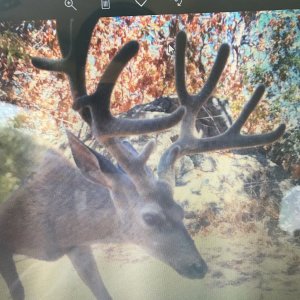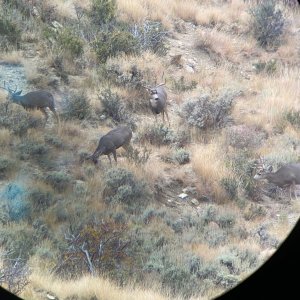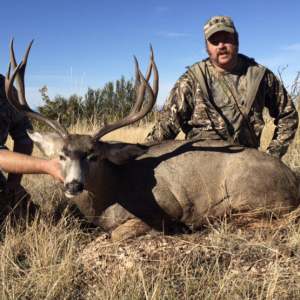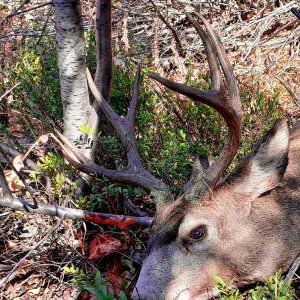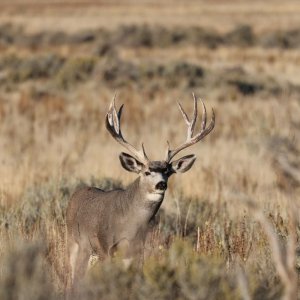http://wildlifelaw.unm.edu/fedbook/pract.html
FEDERAL AID IN WILDLIFE RESTORATION ACT (PITTMAN-ROBERTSON ACT)
16 U.S.C. ?? 669-669i, September 2, 1937, as amended 1939, 1941, 1946, 1950, 1955, 1956, 1959, 1960, 1970, 1972, 1974, 1976, 1980, 1984, 1986 and 1989.
Overview. This Act, commonly called the Pittman-Robertson Wildlife Restoration Act, provides federal aid to the states for the management and restoration of wildlife. The aid, funded through an excise tax on sporting arms and ammunition, may be used to support a variety of wildlife projects, including acquisition and improvement of wildlife habitat.
Selected Definitions. Wildlife-restoration project: selection, acquisition, restoration, rehabilitation, improvement and maintenance of areas of land or water adaptable as feeding, resting or breeding places for wildlife; also includes research into problems of wildlife management. ?? 669a and 669g.
Cooperation of Secretary with the States. The Act authorizes the Secretary of the Interior (Secretary) to provide federal aid to state fish and game departments for wildlife restoration projects. To be eligible for federal funds, a state must assent to the provisions of the Act and have laws governing the conservation of wildlife. Additionally, a state must have a law prohibiting the diversion of license fees paid by hunters for any purpose other than the administration of the state's fish and game department. All wildlife-restoration projects aided under the Act must be agreed upon by the Secretary and the fish and game department of the state where the project is located. ? 669.
Wildlife Restoration Fund. The Act establishes a federal aid to wildlife restoration fund, in the U.S. Treasury. The fund consists of all revenues accruing each fiscal year from taxes imposed on certain types of sporting goods. The sporting goods covered by the Act are specified in the Internal Revenue Code, 26 U.S.C. ?? 4161(b) and 4181, and include most types of firearms, ammunition, and bows and arrows.
The Act authorizes funds to be appropriated and made available until expended. Any amount apportioned to a state that is unspent or unobligated at the end of the fiscal year following the fiscal year in which the funds were apportioned may be used by the Secretary to carry out the provisions of the Migratory Bird Conservation Act, which is summarized in this Handbook. The Secretary may use up to eight percent of the revenues to the fund for administering this Act and the Migratory Bird Conservation Act. Remaining revenues must be apportioned to the states.
One-half of the revenues accruing to the fund each fiscal year from tax imposed on pistols, revolvers, bows and arrows must be apportioned among the states based on population. No state, however, may be provided more than three percent and not less than one percent of such revenues, and Guam, the Virgin Islands, America Samoa and the Northern Mariana Islands must each be apportioned one-sixth of one percent.
Of the revenues remaining in the fund, one-half must be apportioned among the states based on geographic size and one-half based on the number of paid hunting-license holders in each state. Apportionments must be equitably adjusted so that no state receives less than one-half of one percent or more than five percent of the total amount apportioned. ?? 669b-669c.
For each fiscal year, the Secretary must certify to the Secretary of the Treasury and to each state fish and game department the amount of revenues apportioned to each state and the amount deducted for administrative expenses. A state wishing to avail itself of funds apportioned under the Act must notify the Secretary of the Interior to this effect within 60 days after receiving the notice of certification. If a state fails to do so, its funds may be used by the Secretary to carry out the provisions of the Migratory Bird Conservation Act. ? 660d.
The Act requires the Secretary of the Treasury to invest the portion of the fund not required for current year spending in interest-bearing obligations. The interest must be used for the North American Wetlands Conservation Act (summarized in this Handbook) through fiscal year 2005, and then be made available for apportionment under this Act. ? 669b.
Wildlife Restoration Projects. To receive funds under the Act, a state must submit to the Secretary either a comprehensive fish and wildlife resource management plan or a detailed description of proposed wildlife-restoration projects. Wildlife resource management plans must insure the perpetuation of wildlife resources for economic, scientific and recreational purposes. The plans must be for a least five years and must be based on long-range projections regarding the desires and needs of the public. Upon approval by the Secretary of a state's plan or wildlife-restoration project, the state may use the federal funds apportioned it under the Act to finance up to 75 percent of the costs of the plan or project. Approved plans or projects must be comprehensive and substantial in character and design. ? 669e.
The maintenance of wildlife-restoration projects established under the Act becomes the duty of the states. Apportioned funds may be used by the states for management of wildlife areas and resources, but not for law enforcement or public relations. States may use funds apportioned on the basis of population to pay up to 75 percent of the costs of a hunter safety program, and the construction and operation of public target ranges. ? 669g.
Aid to U.S. Territories and Possessions. The Act authorizes the Secretary to provide aid to Puerto Rico, Guam, America Samoa, the Northern Mariana Islands and the Virgin Islands for wildlife-restoration projects. The Secretary may, in any one year, apportion up to one-half of one percent of the money available under the Act for Puerto Rico and one-sixth of one percent each for Guam, American Samoa, the Northern Mariana Islands and the Virgin Islands. In no event may the Secretary require any of the cooperating agencies to pay more than 25 percent of the cost of an approved project. ? 669g-1.
Regulations. The Secretary is authorized to promulgate regulations necessary for carrying out the Act. ? 669i.
--------------------------------------------------------------------------------
JB



